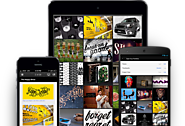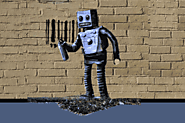-
About
- About Listly
- Community & Support
- Howto
- Chrome Extension
- Bookmarklet
- WordPress Plugin
- Listly Premium
- Privacy
- Terms
- DMCA Copyright
- © 2010-2025 Boomy Labs


 Martin Smith
Martin Smith
Listly by Martin Smith
Trending marketing, apps and e-commerce curated content on Flipboard.
Source: https://flipboard.com/@curagami/curagami-ros0t46qy

It turns out most of these apps originate in China and often feature broken English. That’s a red flag, and they also usually don’t have version histories or reviews. Some of these apps’ purpose is just to feed you a bunch of ads, which is pretty harmless, but you still should be on the lookout if you’re going to give your payment information to anything suspicious. Apple does their part to remove counterfeit apps from the store but they don’t always catch everything.

These relatively new apps for designers can help you keep creative and balance your books and save your time for creative work.
Behance Apps
http://cushionapp.com/
https://evernote.com/
https://www.waveapps.com/
https://hackpad.com/
https://freedom.to/
https://www.fiftythree.com/

“There’s a beautiful circularity to it,” says Brian Cooper, chief creative officer at marketing agency Oliver Group. “It’s like life imitating art. Algorithms try to mimic real life and then real life mimics the algorithms. Marketing will only survive if it continues to adapt and evolve.”
AI is shifting from brands serving ads to the right person at the right time to serving them to the right device at the right time. This doesn’t only mean understanding smartphones, but also new AI-powered devices that suggest products or services based on a user’s history, such as voice-controlled smart speaker Amazon Echo.
“If brands are not part of that suggestion, they’re dead to that user,” says Ru Barksfield, CEO and co-founder at adtech firm, Fat Unicorn. “The necessity to market to machines is already a reality, and AI is definitely going to dictate how and which brands are directed to an end user.”
With more brands engaging with AI, marketing must become more sophisticated. The best digital content must be recognised by machines while remaining human-focused and meeting the needs of potential buyers. But while AI can build a creative idea, it’s not creative “in the true sense of the word”, according to Mr Cooper.
Machine learning – the driving technology behind how AI can learn – still requires human intelligence to work out how the machine would get there. “It can’t put two seemingly random thoughts together and recognise something new,” Mr Cooper says.

If there is a stronger testimony to the power of personal brands in the “new marketing” than Banksy’s prolific career, art world disruption, and extension of middle finger to all the normal ways of doing anything we don’t know it (and we watch for that kind of stuff :). Banksy’s lessons are simple and dramatic:
Read more marketing tips from Banksy on Curagami: http://www.curagami.com/banksy-marketing-tips/.

Rebecca Minkoff—the designer and the fashion brand—is not shy about adopting technology. From debuting drones on the catwalk to installing interactive mirrors in dressing rooms to selling bracelets that double as phone chargers, Minkoff is at the forefront of fashion technologies.
She is the first to admit that most everything going on in wearables at the moment is horrible. In an event at her SoHo store for Fast Company’s Innovation Festival, she dished on what everyone is doing wrong—and why she blames men trying to design for women for a lot of it. Here are the best bits from our discussion.
